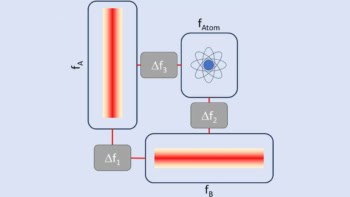There is strong evidence for the human impact on climate change, but we should not ignore those who think otherwise

Unseasonably warm weather in many parts of Europe and North America last month will probably have added to the impression in many people’s minds that climate change is a reality and that humans are guilty of warming our planet. The several hundred members of the United Nations’ Intergovernmental Panel on Climate Change (IPCC) certainly think that the evidence for anthropogenic climate change is solid. Although Physics World was unable to obtain a copy of the IPCC’s latest report on the science of climate change before its release date of 2 February – a clear sign of how sensitive its findings are – hints from those involved in writing the report suggest that the IPCC will have strengthened its conclusions, previously stated in 2001, that humans are heating up the Earth.
While most scientists probably share this view, there are some who think otherwise. Many of those are either scientifically ill-informed or have dubious links with the energy industry. But some have genuine doubts. One bona fide sceptic is Richard Lindzen, a climate physicist from the Massachusetts Institute of Technology in the US, who was involved in preparing the IPCC’s 2001 scientific report. While he does not dispute that the Earth is getting hotter, Lindzen thinks that, in all probability, the warming is largely the result of natural variations in the Earth’s climate (see “A climate of alarm”).
Lindzen believes that climate models, although rooted in physics, contain far too many uncertainties to provide accurate forecasts. Indeed, mainstream climate physicists admit their computer models are far from perfect. Writing in their feature, for example, the chief scientist of the UK’s Meteorological Office and colleagues describe how hard it is to incorporate the impact of clouds, which are much smaller than the resolution of the best models. They also warn that if clouds were modelled incorrectly, climate simulations “would be seriously in error”.
Nevertheless, the balance of evidence does suggest that carbon dioxide being pumped into the atmosphere is having a significant warming effect. It is therefore right and prudent to limit greenhouse-gas emissions as a way of dealing with the causes of climate change. There is even a small band of researchers proposing various outlandish schemes to deal with the effects of climate change – an approach known as “geoengineering” (see p10; print version only). Nobel-prize-winning chemist Paul Crutzen, for example, has suggested pumping vast quantities of sulphur into the atmosphere to act as a huge Sun block, while others are considering sending solar reflectors into space or even painting roads white. These ideas are hugely expensive and possibly unfeasible, and it is to be hoped that we will never have to put them into action.
One may ask if this magazine should give space to Lindzen or those involved in geoengineering to air their views. Given the uncertainties still present within climate models and the potential costs of dealing with global warming, it would be wrong for Physics World to ignore those outside the mainstream. After all, as Richard Feynman once wrote: “There is no harm in doubt and scepticism, for it is through these that new discoveries are made.” Physicists should never take anything at face value, not least a topic as important as climate change.



